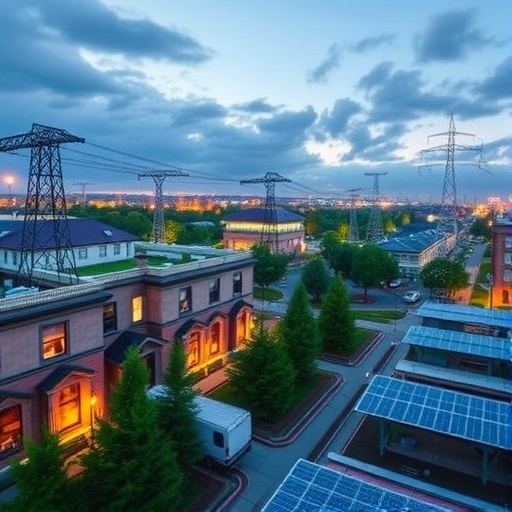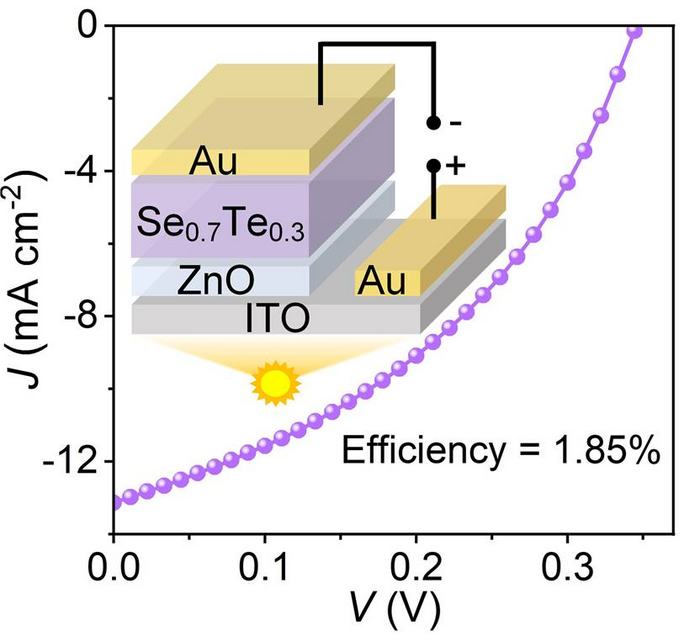
In recent years, the energy landscape has undergone a remarkable transformation, with decentralized power systems like microgrids rising to prominence as key players in the future of sustainable energy. A cutting-edge study led by Zhu, Wang, Lin, and collaborators has taken a decisive step forward by addressing a critical challenge in the operation of direct current (DC) microgrids: optimizing their performance not only for economic benefits but also for system stability. This breakthrough, detailed in their 2025 publication in Communications Engineering, unveils a novel model-data co-driven framework that promises to revolutionize how these intricate energy networks operate.
Unlike traditional alternating current (AC) grids, DC microgrids have several inherent advantages, including higher efficiency, easier integration with renewable sources such as photovoltaics and batteries, and simpler power electronic interfaces. However, this paradigm also introduces complex operational challenges. Stability issues, voltage fluctuations, and economic dispatching have traditionally taxed system operators, especially under varying load conditions and intermittency from renewable sources. The new framework introduced by Zhu and colleagues seamlessly integrates advanced physical models with real-time data analytics, creating a dynamic platform that simultaneously considers system robustness and cost-effectiveness.
At its core, the model-data co-driven framework leverages an iterative process combining detailed physical power flow models and machine learning algorithms trained on historical and live operational data. This hybrid approach stands in contrast to traditional purely model-based or purely data-driven methods, each of which has inherent limitations when confronted with the nonlinearity and uncertainty of real-world microgrid environments. By fusing these methodologies, the framework delivers highly accurate predictive insights while maintaining interpretability rooted in first-principles physics.
.adsslot_869mEHYx0h{width:728px !important;height:90px !important;}
@media(max-width:1199px){ .adsslot_869mEHYx0h{width:468px !important;height:60px !important;}
}
@media(max-width:767px){ .adsslot_869mEHYx0h{width:320px !important;height:50px !important;}
}
ADVERTISEMENT
One of the remarkable innovations of the study is how it formalizes a multivariate optimization problem that includes stability constraints alongside economic objectives. Conventional optimization approaches typically prioritize minimizing operational costs or maximizing efficiency but often overlook or simplify the nuanced stability limits of DC microgrids. Zhu and his team meticulously incorporate these stability criteria — such as voltage deviation limits and component stress thresholds — ensuring that the optimized operating setpoints do not inadvertently compromise system resilience.
The researchers tested their framework on a realistic DC microgrid scenario, comprising distributed energy resources, energy storage systems, and multiple heterogeneous loads. Their results were striking: the co-driven optimization substantially improved overall economic performance, reducing operational expenses by up to 15% compared to benchmark strategies while simultaneously enhancing voltage stability margins. This dual achievement underscores the immense value of their methodology, reinforcing the premise that economic and stability goals need not be mutually exclusive.
One of the enabling factors behind these gains is the framework’s adept handling of forecasting errors and data sparsity. Traditional operational strategies often falter due to imperfect knowledge of future load profiles or renewable generations, leading to either conservative operating points or risky overextensions. In contrast, the co-driven approach dynamically updates its internal models using streaming sensor data, autonomously correcting deviations and refining its control actions. This responsiveness to real-time information is crucial for the increasingly volatile conditions faced by modern microgrids.
Furthermore, the flexibility of the proposed framework is noteworthy. By adjusting the weighting between stability constraints and economic objectives, system operators can tailor performance to their priorities in varying scenarios—whether favoring more conservative, robust operations during peak demand periods or pushing for tighter economic efficiency when conditions are stable. This adaptability makes the methodology practical and scalable across different microgrid sizes and configurations.
From an engineering perspective, this work opens new pathways for integrating power electronics control strategies with high-level optimization algorithms. The detailed modeling of converters, battery management systems, and interconnection elements within the optimization problem reflects a comprehensive understanding of the myriad factors influencing microgrid performance. This level of granularity enables precise curtailment of adverse operating conditions while exploiting available flexibility and redundancy within the system.
The implementation of this research also has significant implications for the wider energy transition. As microgrids become more prevalent in urban, industrial, and rural settings, achieving stable and economical operation becomes imperative to ensure reliability and cost savings. This approach could directly assist utilities, independent system operators, and microgrid managers in unlocking the full potential of local energy resources while maintaining grid security and customer satisfaction.
Moreover, the scientific community stands to benefit from the accessible and transparent nature of the model-data co-driven framework. By balancing physical insights and data-driven learning, it avoids some of the “black box” pitfalls of purely machine-learning-based solutions, fostering better trust and understanding among engineers and decision-makers. This transparency can accelerate adoption and further innovation as stakeholders grasp how system behaviors map to operational choices.
The economic advantages demonstrated, though significant in percentage terms, also translate into substantial monetary savings and emissions reductions on a large scale. Reducing operational costs makes renewable microgrid solutions more competitive relative to fossil-fuel-based alternatives. Additionally, keeping voltage and stability parameters within optimal margins mitigates wear-and-tear on hardware, potentially extending the lifespan of critical components and contributing to sustainability goals.
From a research methodology standpoint, the paper also exemplifies the power of interdisciplinary approaches combining control theory, machine learning, power engineering, and economics. The coalescence of these domains under a unified optimization umbrella represents a growing trend in energy systems research, highlighting the complexity and multifaceted nature of modern power challenges.
Looking toward the future, the authors envision extending their framework to encompass more diverse grid architectures, including hybrid AC/DC microgrids and larger interconnected networks. They also anticipate incorporating more sophisticated uncertainty quantification techniques and exploring decentralized variants to improve scalability and resilience against cyber-physical threats.
The impact of this study resonates beyond the technical community as well. Policymakers aiming to accelerate green energy deployment can draw on these findings to support incentives for advanced microgrid control technologies. For consumers and commercial entities, the promise of more reliable, efficient, and cost-effective local power fosters confidence in the evolving energy landscape.
In sum, the operation optimisation framework for DC microgrids developed by Zhu and colleagues marks a transformative contribution that deftly bridges theoretical innovation with practical applicability. By marrying model precision with adaptive data-driven insights, it charts a compelling path toward microgrid systems that are simultaneously stable, economical, and adaptable. As the global energy ecosystem undergoes rapid change, such integrative solutions will be pivotal in realizing resilient, sustainable, and intelligent power infrastructure.
In the broader context of clean energy transitions and smart grids, this advancement underscores the necessity of holistic strategies that address multiple criteria simultaneously. The study’s success testifies to the power of synergy between human expertise, advanced analytics, and physical understanding—a synergy that will undoubtedly inspire future breakthroughs in energy system optimization and control.
Subject of Research: Operation optimization of direct current microgrids focused on stability and economic performance through an innovative model-data combined approach.
Article Title: Operation optimisation of direct current microgrids toward stability and economy: a model-data co-driven framework.
Article References:
Zhu, Y., Wang, F., Lin, Z. et al. Operation optimisation of direct current microgrids toward stability and economy: a model-data co-driven framework. Commun Eng 4, 125 (2025). https://doi.org/10.1038/s44172-025-00466-7
Image Credits: AI Generated
Tags: challenges in microgrid operationsDC microgrid optimizationeconomic benefits of microgridsefficiency of decentralized power systemsfuture of energy networksmodel-data co-driven frameworkpower flow modeling in microgridsreal-time data analytics for energyrenewable energy integrationstability in direct current gridssustainable energy systemsvoltage stability in DC systems






